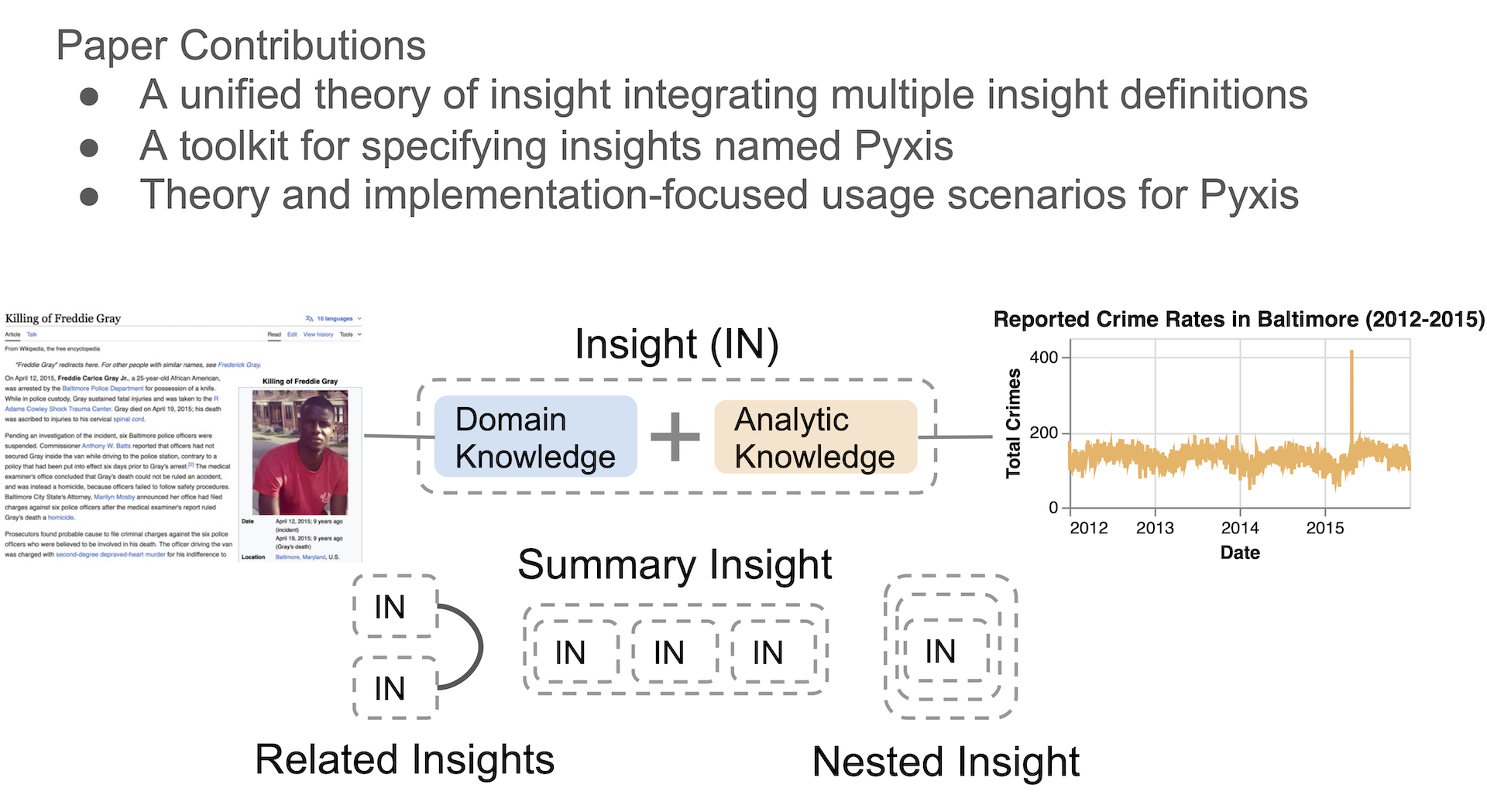What Do We Mean When We Say “Insight”? A Formal Synthesis of Existing Theory
Leilani Battle -
Alvitta Ottley -
DOI: 10.1109/TVCG.2023.3326698
Room: Bayshore II
2024-10-16T15:15:00ZGMT-0600Change your timezone on the schedule page
2024-10-16T15:15:00Z

Fast forward
Full Video
Abstract
Researchers have derived many theoretical models for specifying users’ insights as they interact with a visualization system. These representations are essential for understanding the insight discovery process, such as when inferring user interaction patterns that lead to insight or assessing the rigor of reported insights. However, theoretical models can be difficult to apply to existing tools and user studies, often due to discrepancies in how insight and its constituent parts are defined. This paper calls attention to the consistent structures that recur across the visualization literature and describes how they connect multiple theoretical representations of insight. We synthesize a unified formalism for insights using these structures, enabling a wider audience of researchers and developers to adopt the corresponding models. Through a series of theoretical case studies, we use our formalism to compare and contrast existing theories, revealing interesting research challenges in reasoning about a user's domain knowledge and leveraging synergistic approaches in data mining and data management research.